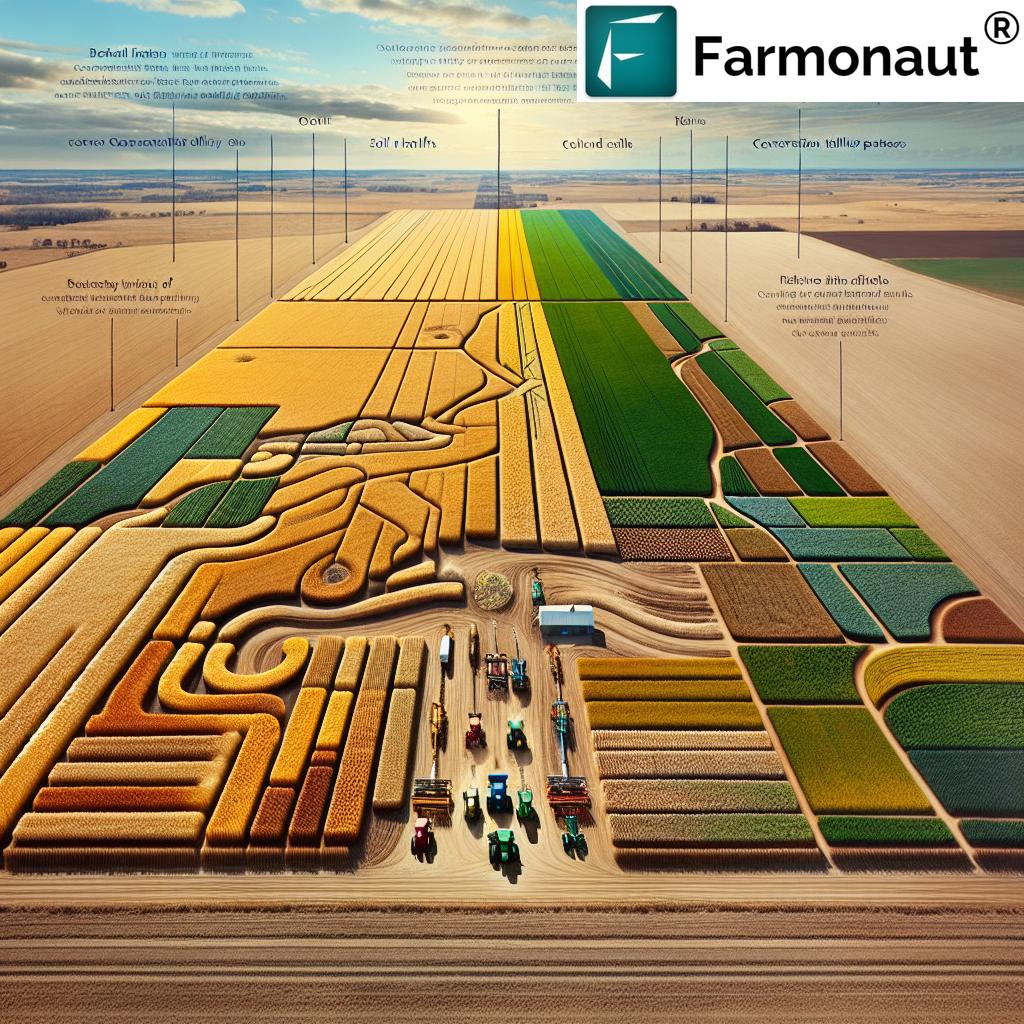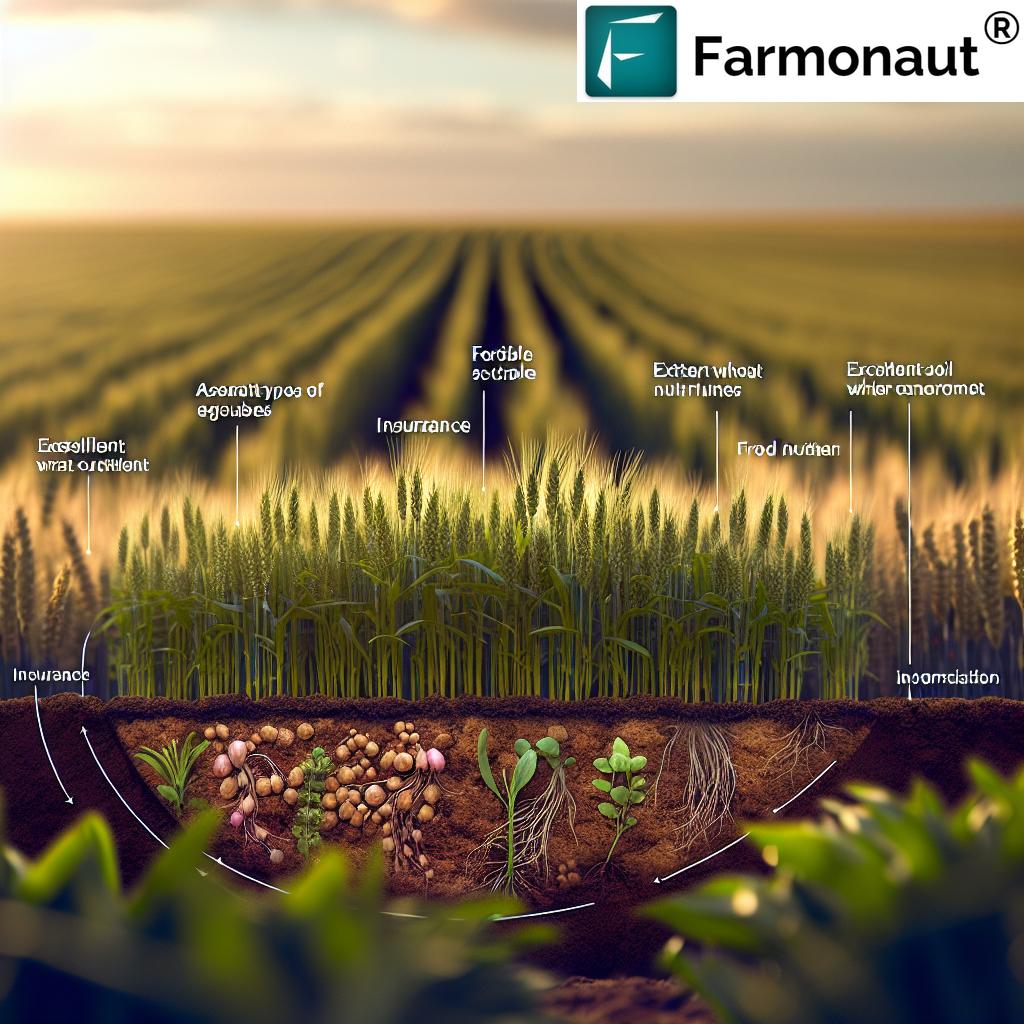Kansas Winter Wheat Yield: 7 Shocking Growth Secrets
“Kansas produces over 300 million bushels of winter wheat annually, feeding millions worldwide.”
Kansas Winter Wheat Yield: Industry Overview
As one of the most vital winter wheat producers in the United States, Kansas consistently impacts national and global wheat supplies. Each year, vast regions across this state transition through climatic conditions—from hot summers to cold winters—which directly influence the growth and yields of wheat crops.
However, factors affecting wheat production are far more complex than just the weather forecast. As we explore the realities of cultivating winter wheat in Kansas, it becomes apparent that soil health, agricultural practices, economic pressures, and evolving policies all converge to define the region’s successes and challenges.
In this comprehensive post, we will dissect the 7 shocking growth secrets driving Kansas winter wheat yield, unpack the science behind sustainable practices, scrutinize the effect of droughts on wheat crops, and highlight groundbreaking technological advancements (including those pioneered by Farmonaut) that are revolutionizing the state’s agricultural landscape.
Kansas winter wheat yield represents not only a measure of agricultural productivity, but also a reflection of the interconnected systems that support food security in North America and far beyond.
Climatic Conditions in Kansas Agriculture & Their Impact on Wheat Yields
The climatic conditions in Kansas agriculture offer both opportunity and adversity. Positioned in the heartland, Kansas endures a truly continental climate. Our wheat fields are shaped by hot summers, cold winters, substantial temperature swings, and marked variability in precipitation patterns, which shift across the state’s east-west gradient.
1. How Continental Climate Impacts Developmental Stages
- Germination: Optimal soil temperatures (above 40°F/4°C) are needed for winter wheat seeds to sprout. Erratic temperature drops can delay or stunt this stage.
- Tillering and Jointing: Adequate moisture from snow or rainfall is vital as plants build structure. Drought impact on wheat crops here can be devastating.
- Heading and Maturation: Extended heat waves and prolonged droughts stress crops, risking incomplete grain fill and lower yields.
According to recent reports, drought conditions have intensified, affecting over 58% of winter wheat areas—the highest rate since early 2023 (Reuters). Such weather events are not merely cyclical but may be exacerbated by global climate change.
Heat waves and weather anomalies can force farmers to accelerate or delay harvests, directly reducing yields and weakening economic outcomes. The smallholder farmers in particular suffer from decreased financial stability amid operational unpredictability (Time).
Quick Facts: Weather’s Direct Influence
- Nearly half of Kansas’s wheat fields experience significant drought risk in any given year.
- The timing of precipitation is often more crucial than annual totals. Late spring rain can salvage crops; early drought can devastate them.
To proactively enhance wheat yields under shifting weather extremes, we must integrate real-time monitoring and climate-resilient crop selection—topics we’ll revisit in our growth secrets.
“Sustainable practices can boost Kansas wheat yields by up to 20% even under challenging climatic conditions.”
Soil Health and Wheat Yields: The Foundation of Success
Our winter wheat yields depend on the invisible yet essential quality beneath our feet: soil health. Healthy soils provide the nutrients, water retention, and microbial activity that drive optimal wheat yields.
2. Impact of Industrial Agriculture on Soil Structure
Decades of industrial agriculture have degraded the very system we rely upon. Heavy tilling, monocultures, and over-reliance on synthetic fertilizers have compromised the structure and living function of Kansas soils. According to research (Time), these practices accelerate erosion and reduce soil resilience.
- Reduced organic matter—less moisture and nutrient storage.
- Lesser aggregate stability—increasing runoff and erosion.
- Loss of beneficial microbes—weakened suppression of diseases and lower nutrient cycling.
3. Crop Rotation Benefits for Soil Rejuvenation
Implementing crop rotation—especially the integration of legumes—is among the top sustainable wheat farming practices. Legumes fix nitrogen biologically, thus reducing dependence on manufactured inputs and stabilizing soil fertility.
- Natural nitrogen fixation reduces input costs and environmental impact.
- Conservation tillage preserves soil structure and limits erosion.
- Cover crops prevent erosion, enhance nutrient retention, and support microbial life.
Embracing these methods leads not only to higher yields but also to stronger resilience during drought events.
Access Farmonaut’s powerful satellite-based farm management and real-time crop monitoring—on web, Android, and iOS—and unlock the best in precision agriculture!
Developers and agribusinesses can benefit from Farmonaut’s satellite/weather API and review integration options at API Developer Docs.
Economic Challenges for Wheat Farmers: Navigating Global & Local Pressures
Beyond science and climate, economic challenges for wheat farmers in Kansas are especially acute in an era of volatile global wheat market prices. Years marked by grain oversupply worldwide have driven prices to near-record lows (Reuters).
- Input costs (equipment, transportation, fuel) continue to climb even as prices for harvested wheat stagnate or fall.
- States such as Kansas see many farmers breaking even or facing losses—even when yields appear solid on paper.
- Farmers must reduce operational spending (equipment upgrades, repairs) and often depend on crop insurance to cushion unpredictable years.
Examples of Economic Stressors
- Abundant exports from regions like the Black Sea and Europe pressure U.S. cash prices.
- Loan repayments become harder as margins shrink.
- Some farmers leave wheat altogether, shrinking the state’s production base and threatening long-term supply chains.
In summary, to ensure Kansas’s wheat industry remains viable, farmers and stakeholders must innovate, diversify, and advocate for fair market and policy frameworks.
Sustainable Wheat Farming Practices: Building Resilience for Kansas
We are now entering an era where sustainability is not a choice—but a necessity for Kansas wheat production. Sustainable wheat farming practices are critical for future-proofing yields, protecting the environment, and safeguarding the financial health of new and established operations alike.
4. Core Sustainable Interventions
- Crop Rotation: Periodically alternating wheat with other crops, such as legumes or oilseeds, interrupts pest cycles and improves soil’s nutrient cycling. Learn more about rotation’s impact in the comparative table below.
- Cover Crops: Planted in fallow periods, these minimize erosion and create a living buffer layer to enhance soil structure and microbial diversity.
- Precision Agriculture: Utilizing remote sensing, AI, and GPS-guided systems, like those offered by Farmonaut, enables us to judiciously apply fertilizer, maximize water efficiency, and target areas of poor growth.
- Reduced/Conservation Tillage: By limiting mechanical disturbance, we preserve soil structure, encourage water infiltration, and reduce greenhouse gas emissions.
- Efficient Irrigation: Smart scheduling based on sensor data ensures water is delivered only when and where it’s needed, addressing both drought impact and resource usage.
Adopting these agricultural innovations not only improves yields, but enhances overall sustainability, reduces reliance on off-farm inputs, and helps us qualify for eco-friendly programs or carbon credits.
Deepen Your Impact with Farmonaut
- Carbon Footprinting: Track, analyze, and reduce your operation’s carbon footprint. Farmonaut’s advanced tools let you monitor emissions, improve sustainability, and align with global standards.
- Blockchain-based Traceability: Unlock complete transparency in your wheat supply chain—ensuring product authenticity, increasing consumer trust, and reducing supply chain fraud.
- Satellite-Verified Crop Loan & Insurance Solutions: Streamline loan approvals and insurance claims with up-to-date, unbiased satellite data—reducing fraud risks and improving financial security for Kansas wheat farmers.
- Fleet and Resource Management: Optimize machinery usage and logistics to minimize operational costs and maximize equipment lifespan across all wheat-growing regions.
- Large-Scale Farm Management: Manage plantation operations, field data, and compliance remotely—ideal for agribusinesses and cooperatives managing extensive Kansas wheat acreage.
Technological Advancements in Agriculture: Catalyzing Kansas Wheat Innovation
The future of Kansas winter wheat yield lies in technological advancements in agriculture. Digital transformation is reshaping every aspect of farming, from ultra-precise seed placement to AI-driven crop analytics and blockchain-enabled traceability.
5. Satellite Monitoring and Precision Advisory Systems
- Multispectral Satellite Imagery: Services like Farmonaut use NDVI and soil moisture mapping to detect in-field variability, identify stress zones, and target rectifying actions before yield loss occurs.
- AI-Based Advisory (Jeevn AI): Real-time crop health alerts, custom fertilizer schedules, and disease risk forecasts allow for data-driven decisions that optimize yield and cut input wastage.
- Blockchain Traceability: Every stage of production and storage is securely logged, allowing for credible sourcing and streamlined claims in the case of crop insurance or lending.
Farmonaut’s precision agriculture tools make it easier than ever for Kansas wheat producers to adapt, increase yield, and participate in climate-smart agricultural systems.
Policy and Support Systems for Kansas Wheat Producers
Effective policy and support systems are essential for maintaining a thriving winter wheat industry in Kansas. Federal and state-level programs such as crop insurance, subsidies, and research funding offer a safety net during years of climatic or economic adversity. However, these supports are beholden to shifting political priorities and budget allocations.
- Crop insurance helps farmers recover after catastrophic droughts or other weather shock events, but often covers only a portion of true losses.
- Subsidies can ease financial pressure and support adoption of sustainable wheat farming practices.
- Research funding ensures ongoing development of climate-resilient wheat varieties and best management practices.
To build a resilient future for Kansas wheat, advocacy for science-driven policy and targeted support programs is crucial.
Comparative Table: Sustainability Practices & Kansas Winter Wheat Yield
| Year / Scenario | Climate Condition (Temperature/Precipitation – Estimated) | Soil Health Score (Estimated) | Sustainable Practice Used | Estimated Yield (bushels/acre) | Economic Outcome (Profit/Loss – Estimated) |
|---|---|---|---|---|---|
| 2015 (Baseline) | Average (Low drought, standard precipitation) | 7/10 | Conventional Tillage, Limited Rotation | 52 | Modest Profit |
| 2018 (Severe Drought) | High temp, 30% below-average precip | 5/10 | Minimal conservation, wheat monoculture | 31 | Loss |
| 2020 | Balanced (timely rainfall, cooler season) | 8/10 | Crop Rotation, Reduced Tillage | 61 | High Profit |
| 2022 (Cover Crop Trial) | Average, mild spring drought | 8.5/10 | Cover Cropping, AI monitoring | 65 | High Profit |
| 2024 (Projected, Prolonged Drought) | Prolonged high temps, low precipitation | 7/10 | Crop Rotation + Precision Fertilization | 50 | Modest/Loss |
| Sustainable Best Case | Variable, balanced inputs | 9/10 | Full rotation, cover cropping, reduced till, precision farming | 70+ | High Profit |
The table demonstrates how sustainable practices (especially when paired with technology) substantially mitigate the impact of climatic extremes, boosting yields and improving economic resilience for Kansas wheat farmers.
7 Shocking Growth Secrets for Maximizing Kansas Winter Wheat Yield
Unlocking the potential of Kansas winter wheat yield demands a holistic approach. Here’s what top researchers, agronomists, and our own field analyses reveal as the seven growth secrets every Kansas wheat grower must know:
- Time Planting for Soil Moisture, Not Just Calendar Dates: Adapting to actual soil moisture and forecasted precipitation ensures germination success when summer heat gives way to autumn cool.
- Rotate Wisely for Nitrogen & Disease Management: Strategic crop rotation (especially with legumes) breaks disease cycles and reduces input dependence—benefitting both yield and sustainability.
- Adopt Reduced Tillage Techniques: Conservation tillage keeps soil structure, maximizes water retention, boosts soil health, and prevents erosion.
- Leverage Technology for Precise Input Management: Using satellite imagery (like with Farmonaut), we apply fertilizers and water where most needed, cutting waste and raising average yields.
- Integrate Drought-Resistant Wheat Varieties: Advanced breeding and biotechnology now provide varieties that can thrive in high-temperature, low-precipitation conditions experienced across Kansas regions.
- Protect Soil Year-Round With Cover Crops: Even in off-seasons, living roots and residue shield against erosion, enhance nutrient cycling, and stabilize soil organic matter.
- Participate in Government and Private Support Programs: Enroll in crop insurance, sustainability incentive programs, and research pilots to buffer against price and weather shocks.
When systematically combined, these secrets help us achieve optimal yields—even during years marked by climatic and economic challenges.
Future Outlook and Innovations for Kansas Wheat Production
The path ahead for Kansas winter wheat yield is challenging yet bright, provided we prioritize sustainability, improve soil health, and leverage the latest technological advancements in agriculture.
- Ongoing research into drought-tolerant cultivars and climate-smart management will further future-proof our wheat industry.
- Digital tools and satellite analytics will drive the next wave of input optimization and yield improvement.
- Policy reforms and support systems must keep pace with how global supply chains and market prices evolve.
By integrating these innovations, Kansas will continue as a keystone wheat producer for the United States—and indeed the entire globe.
Subscription Solutions for Kansas Wheat Farmers
Whether you’re managing hundreds of acres or thousands, Farmonaut provides scalable solutions to monitor, analyze, and optimize your wheat operations. Benefit from flexible, subscription pricing on web and mobile platforms.
Empowering Kansas Farmers with Farmonaut’s Advanced Platform
As sustainable, high-yield agriculture becomes the goal for every Kansas wheat producer, Farmonaut stands at the forefront of providing accessible, affordable precision agriculture. Here’s how our solutions unlock competitive advantages:
- Satellite Crop Health Monitoring: Real-time NDVI and soil moisture data, delivered via Android, iOS, and Web apps, help us make timely decisions on irrigation and input management, ensuring higher yields.
- AI-Based Advisory: Farmonaut’s Jeevn AI delivers actionable insights on weather, pest pressures, and input timing, so Kansas wheat farmers always stay a step ahead.
- Blockchain Traceability: With complete traceability, we assure buyers and downstream partners of origin, creating brand value and new market opportunities.
- Fleet & Resource Management: For wheat producers with multiple farms, Farmonaut’s tools optimize machinery allocation and track operational efficiency across large-scale operations.
- Carbon Footprinting: Monitor, report, and reduce carbon emissions associated with wheat production, securing both regulatory compliance and sustainability bonuses.
Farmonaut’s mission is to democratize precision agriculture—bringing cutting-edge analytics and insights to every wheat field in Kansas.
Frequently Asked Questions (FAQ)
What are the main factors affecting wheat yield in Kansas?
Kansas winter wheat yield is influenced by a combination of climatic conditions (temperature, precipitation, droughts), soil health, sustainable farming practices (crop rotation, tillage), technological adoption, and prevailing economic factors like input costs and market prices.
How does drought affect winter wheat in Kansas?
Prolonged drought reduces soil moisture, disrupts critical growth stages (germination, tillering, heading), weakens plant health, and significantly lowers yield. Strategic irrigation, cover cropping, and drought-resistant varieties help mitigate these risks.
What sustainable practices most improve Kansas winter wheat yields?
Crop rotation (especially with legumes), reduced/conservation tillage, cover cropping, and precision input management are the top practices. These collectively enhance soil health, nutrient cycling, and long-term productivity.
Can technology help Kansas wheat farmers overcome climatic and economic challenges?
Yes. Satellite-based monitoring, AI advisory systems, and blockchain traceability (like those from Farmonaut) allow Kansas farmers to make smarter decisions, reduce risks, and access new market incentives.
How does participation in support programs benefit wheat farmers?
Programs such as crop insurance, sustainability incentives, and research pilots buffer farmers against yield and price shocks, support the adoption of innovative practices, and secure the economic viability of wheat operations in volatile years.
Where can I access Farmonaut’s tools?
Farmonaut tools are available through web app, Android app, and iOS app. Data APIs are also available for integration: Farmonaut API.
Conclusion: The Path Forward for Kansas Wheat
In conclusion, Kansas winter wheat yield epitomizes the complex interplay between climate, soil health, economic forces, and technological innovation. Our journey demonstrates that sustainable wheat farming practices, combined with the right digital tools and support systems, are key to weathering the storms of both climate and market volatility.
With innovators like Farmonaut making high-level agricultural technology accessible and affordable, every wheat farmer in Kansas has the opportunity to increase yields, ensure long-term financial stability, and secure the legacy of Kansas as a breadbasket for the United States and the world.
Let’s commit to smarter, more sustainable agriculture—rooted in science, driven by data, and responsive to both environmental and economic realities.















